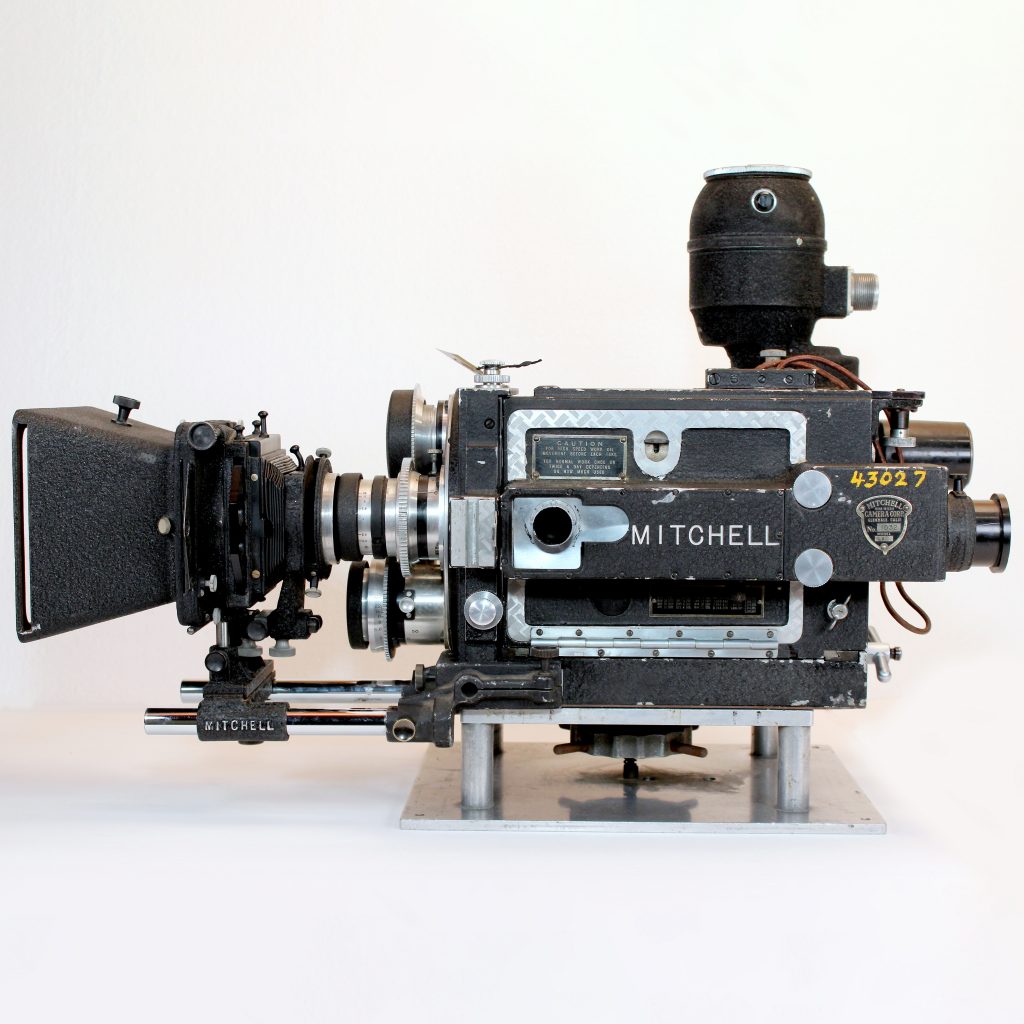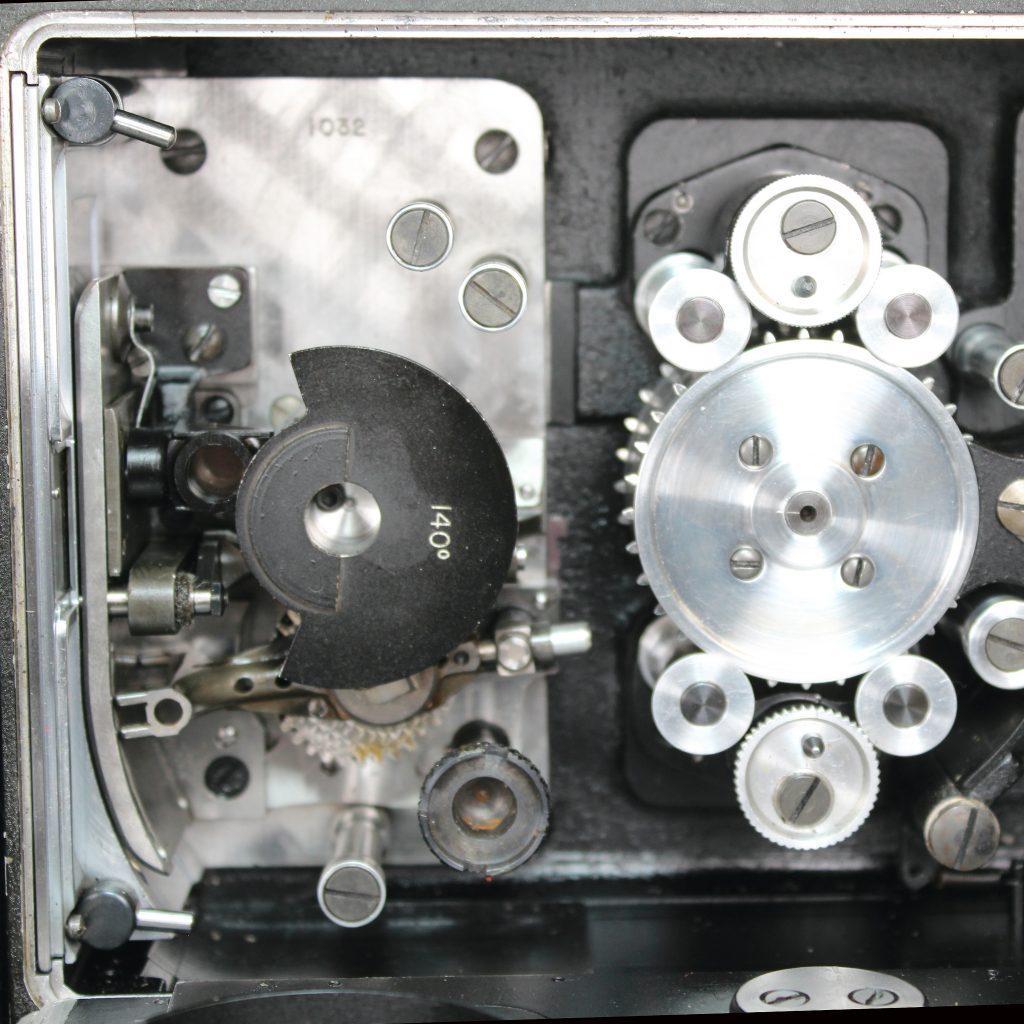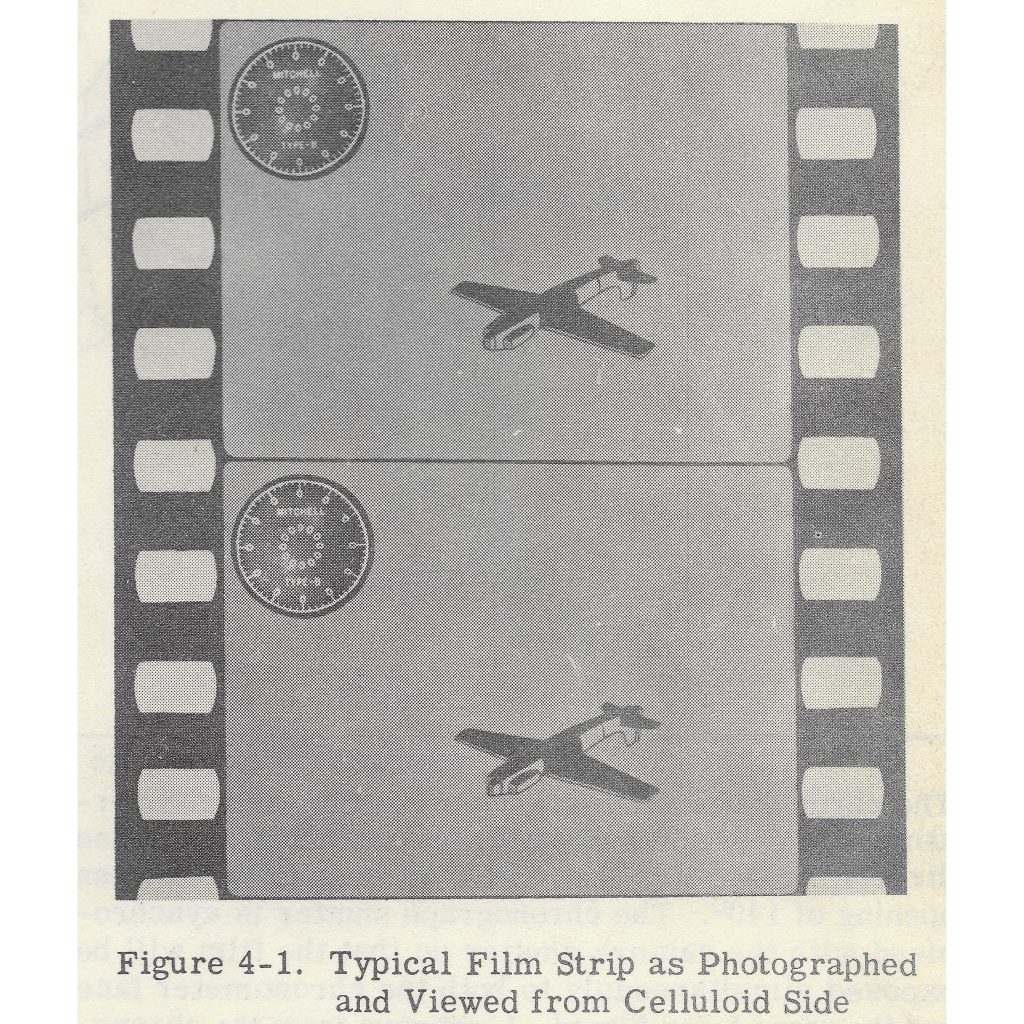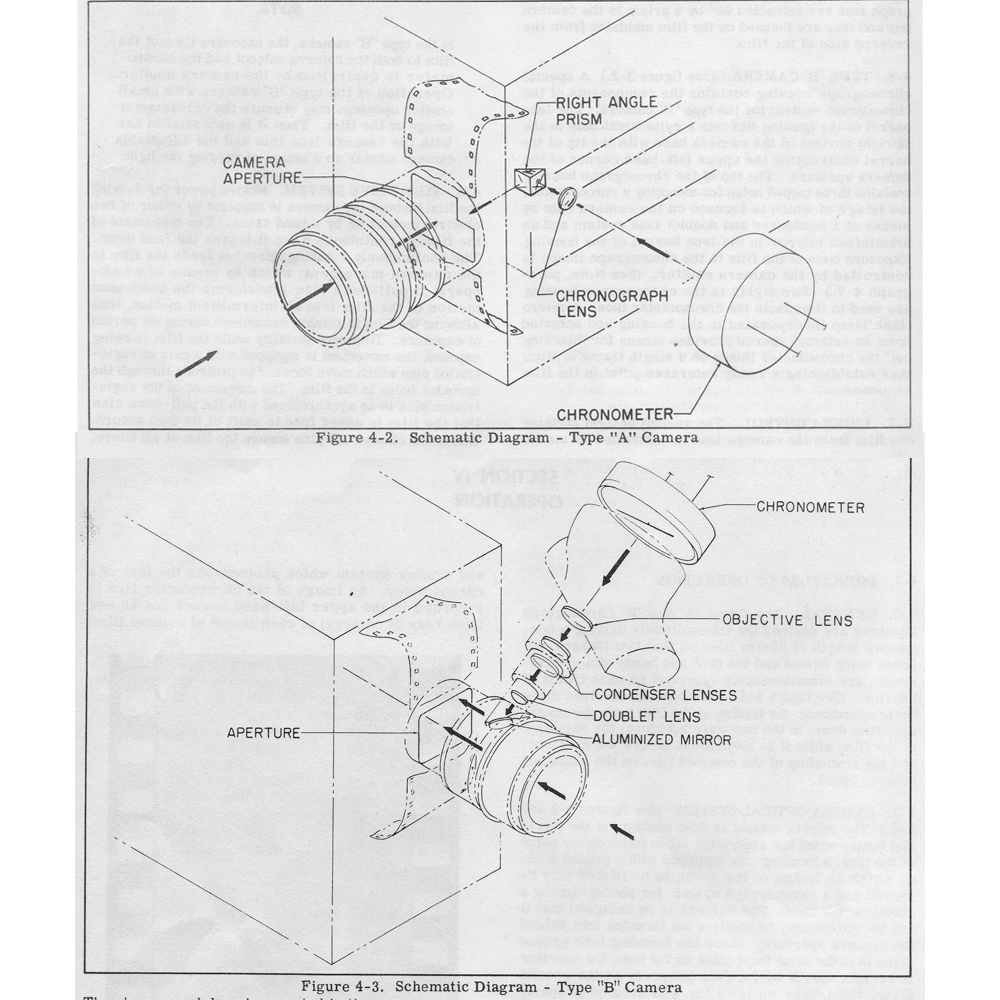I have seen and used a number of Mitchell chronograph cameras over the years without really knowing much about them. A few months back I shared an interesting camera I had recently acquired that featured a shutter mounted on the main shaft of the camera movement. Not knowing exactly what this was used for, Erin and I began looking more into the history of this camera. While doing research for another unrelated piece of equipment, we discovered a 1950’s Air Force manual for Mitchell Chronograph cameras. It was here that we found out about the two different types of chronograph cameras that Mitchell made and were able to identify the camera that had intrigued us previously. Mitchell made two variations of the chronograph, designed in collaboration with the US Navy, the Type A and Type B. Both versions recorded an image of a clock face and the main subject on each film frame. The Type A design seen on GC 1032 (black) makes use of an auxiliary lens built in to the camera door that focuses the chronograph image through a secondary fixed shutter on the movement to a prism mounted in the pressure plate. The chronograph image is then recorded on the film through the base of the film. The Type B design seen on GC 1244 (white) shows a modified rackover L-base that incorporates a socket that the external chronograph unit mounted to. This system eliminated all of the auxiliary shutter, lens, and pressure plate modifications, and allowed the chronograph image to be recorded on the emulsion side of the film. The chronograph cameras were used mainly by the military to document testing of various weapons systems and aircraft.

Type A Chronograph in Mitchell GC # 1032 
Type A Chronograph in Mitchell GC # 1032 
Type B Chronograph in Mitchell GC #1244 
Type B Chronograph in Mitchell GC #1244 
Diagram showing the chronograph image on a piece of film

